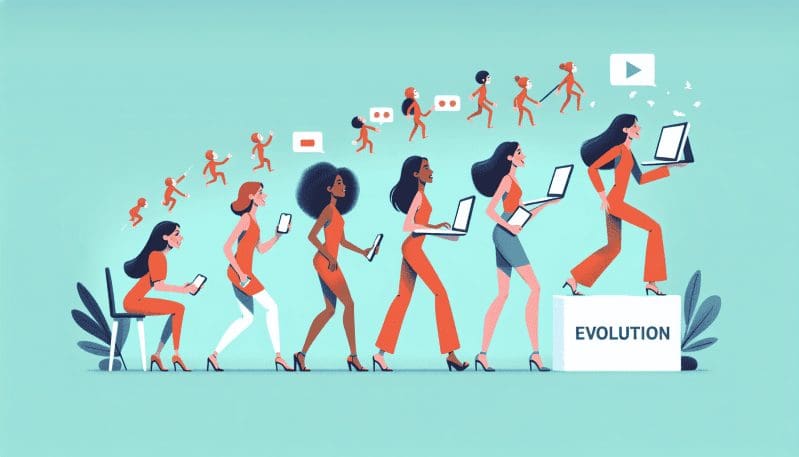Navigating the New Norms: The Evolution of Job Searching for Women in the Post-Pandemic Era
- Home
- Navigating the New Norms: The Evolution of Job Searching for Women in the Post-Pandemic Era
- Editors Desk
- March 28, 2024
- 0 Comments
In an era marked by rapid change and unprecedented challenges, the job search landscape for women has been irrevocably transformed. The COVID-19 pandemic, which upended lives and careers, also spurred a profound shift in how women approach their professional journeys. As we gaze into the evolving world of work, it’s clear that the norms we once knew are being rewritten.
Remote work, once a rare perk, has become an expectation for many. The pandemic proved that vast segments of the workforce could operate effectively outside traditional office spaces, and women, in particular, have embraced this flexibility. Remote opportunities not only open doors to a wider range of job options but also allow women to design work schedules that better accommodate personal responsibilities. This shift acknowledges the complex interplay between professional ambitions and the pursuit of work-life harmony.
The focus on work-life balance has become more than a buzzword; it’s a critical part of the job searching equation. Women are not just seeking roles that fit their skillsets but also environments that support their well-being. Employers are responding by reimagining benefits and policies, recognizing that supportive workplaces attract and retain top female talent. These benefits range from flexible hours and comprehensive healthcare to mental health days and parental leave policies that reflect the realities of modern families.
Diversity and inclusion (D&I) have transitioned from corporate lip service to actionable strategies. A diverse workforce has been proven to drive innovation and improve financial performance, and as such, women are more empowered to seek out companies that not only talk about D&I but visibly demonstrate their commitment. Forward-thinking organizations are now investing in creating inclusive cultures and robust women mentorship programs, acknowledging the unique perspectives and contributions of female workers.
However, these new norms are not without challenges. Remote work can blur the lines between personal and professional life, leading to burnout. The virtual job search process requires different strategies, from mastering digital networking to navigating video interviews. Moreover, the economic impact of the pandemic has disproportionately affected women, particularly women of color, leading to what some have termed the ‘shecession.’
Despite these obstacles, the new job searching landscape offers a wealth of opportunities for women to advance their careers in meaningful ways. Networking has taken on a new life online, with professional platforms and virtual events providing robust avenues for connection and growth. The rise in remote roles has also leveled the geographical playing field, allowing women to access high-level positions regardless of their location.
Companies that recognize and adapt to these changes are poised to succeed in the future of work. Recruitment strategies now prioritize candidate experience, with an emphasis on transparent communication and processes that reflect an organization’s values. Employers are also expanding their talent pools, looking beyond traditional markers of talent to uncover diverse skill sets and perspectives.
In conclusion, as the norms of job searching evolve, so too must our strategies and mindsets. Women are no longer just searching for jobs; they are seeking out cultures, values, and opportunities that align with their entire lives. It’s an exciting time of transformation, and by leveraging these changes, women can forge new paths to career fulfillment and success.
To navigate this new era, it is essential for women to stay informed, adaptive, and proactive. By embracing flexibility, prioritizing balance, and advocating for diversity and inclusion, women can not only adapt to but thrive in the post-pandemic job market. And as companies continue to respond to these shifts, we can expect to see a workplace that is more inclusive, equitable, and aligned with the needs of today’s working women.


Leave A Comment